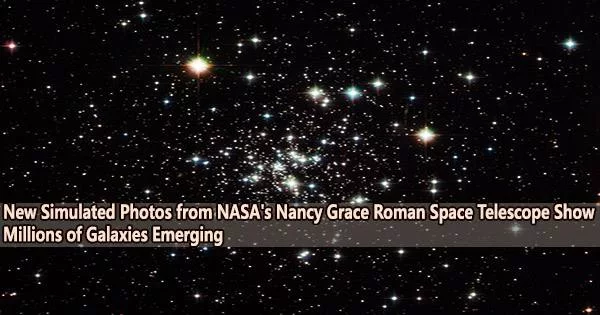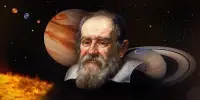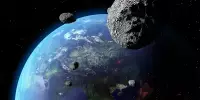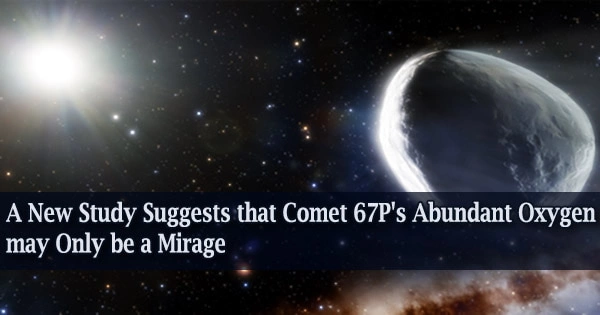Scientists have produced a massive synthetic survey that illustrates what future observations from the Nancy Grace Roman Space Telescope can look like. This simulation comprises a startling 33 million galaxies, along with 200,000 foreground stars in our own galaxy, despite only representing a small portion of the actual future survey.
The simulation will assist researchers in devising the most effective observing plans, testing various methods for analyzing the mission’s massive data sets, and investigating what may be discovered from observations made in combination with other telescopes.
“The volume of data Roman will return is unprecedented for a space telescope,” said Michael Troxel, an assistant professor of physics at Duke University in Durham, North Carolina. “Our simulation is a testing ground we can use to make sure we will get the most out of the mission’s observations.”
The team drew data from a mock universe originally developed to support science planning with the Vera C. Rubin Observatory, which is located in Chile and set to begin full operations in 2024.
Astronomers may contrast the Roman and Rubin models and determine what they can anticipate learning from matching the observations made by the telescopes once they are both actively scanning the cosmos because they share the same source.
A paper describing the results, led by Troxel, has been accepted for publication in The Monthly Notices of the Royal Astronomical Society.
With Roman’s gigantic field of view, we anticipate many different scientific opportunities, but we will also have to learn to expect the unexpected. The mission will help answer critical questions in cosmology while potentially revealing brand new mysteries for us to solve.
Julie McEnery
Cosmic construction
Roman’s High Latitude Wide Area Survey will image the subject of the new simulation and conduct spectroscopy over the same vast expanse of space. While Roman’s imaging will provide accurate positions and forms of hundreds of millions of dim galaxies that will be used to map dark matter, spectroscopy entails measuring the intensity of light from cosmic objects at various wavelengths.
Although this mysterious substance is invisible, astronomers can infer its presence by observing its effects on regular matter.
Anything with mass warps the fabric of space-time. The bigger the mass, the greater the warp. As a result, light from distant sources is warped as it passes through intermediary objects, resulting in the gravitational lensing effect. Background sources may get obscured or appear as several pictures when those lensing objects are large galaxies or galaxy clusters.
Less massive objects can create more subtle effects called weak lensing. Roman will be sensitive enough to observe the effects of dark matter clumps on the appearance of distant galaxies using weak lensing. Scientists will be able to close more knowledge gaps about dark matter by detecting these lensing phenomena.
“Theories of cosmic structure formation make predictions for how the seed fluctuations in the early universe grow into the distribution of matter that can be seen through gravitational lensing,” said Chris Hirata, a physics professor at Ohio State University in Columbus, and a co-author of the paper.
“But the predictions are statistical in nature, so we test them by observing vast regions of the cosmos. Roman, with its wide field of view, will be optimized to efficiently survey the sky, complementing observatories such as the James Webb Space Telescope that are designed for deeper investigation of individual objects.”
Ground and space
20 square degrees, or around 95 full moons, of the sky are covered by the synthetic Roman survey. The actual survey will reveal more than a billion galaxies and be 100 times larger. Rubin will scan a wider area 18,000 square degrees, or roughly half of the sky but with a lesser resolution since it must see through the turbulence of Earth’s atmosphere.
The first opportunity for scientists to try and find the same items in both sets of images comes from pairing the Roman and Rubin simulations. This is significant since it is not always possible to discern between many, nearby sources as individual objects using ground-based observations.
Sometimes they blur together, which affects weak lensing measurements. Now, scientists can determine the difficulties and benefits of “deblending” such objects in Rubin images by comparing them with Roman ones.
Astronomers will be able to do far more than the survey’s major objectives, which include studying the structure and history of the cosmos, mapping dark matter, and distinguishing between the leading hypotheses that claim to explain why the universe is expanding more quickly.
To get a taste of the additional science that will result from observing so much of the universe in such exquisite detail, researchers can go through the new simulated Roman data.
“With Roman’s gigantic field of view, we anticipate many different scientific opportunities, but we will also have to learn to expect the unexpected,” said Julie McEnery, the senior project scientist for the Roman mission at NASA’s Goddard Space Flight Center in Greenbelt, Maryland. “The mission will help answer critical questions in cosmology while potentially revealing brand new mysteries for us to solve.”
















